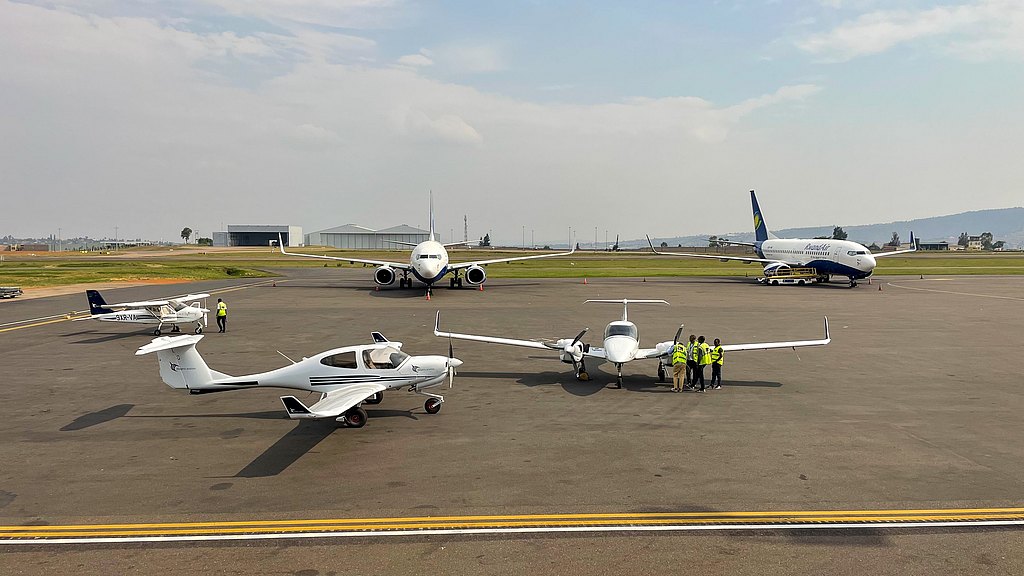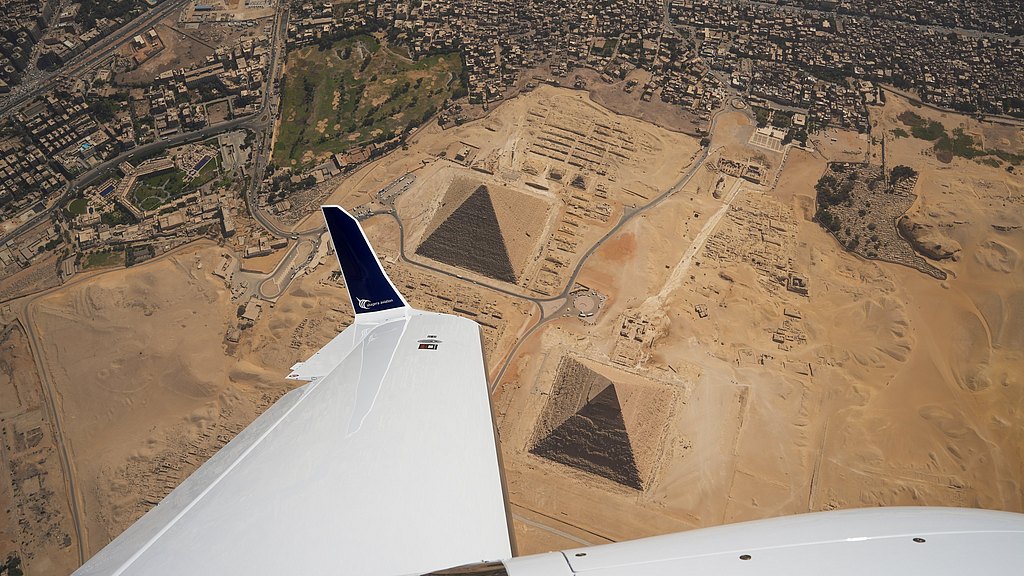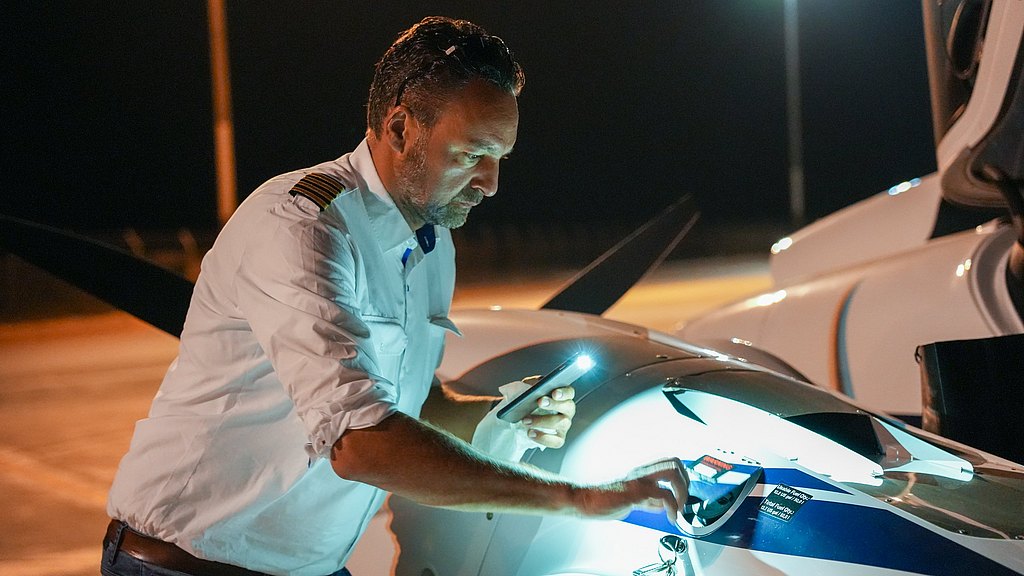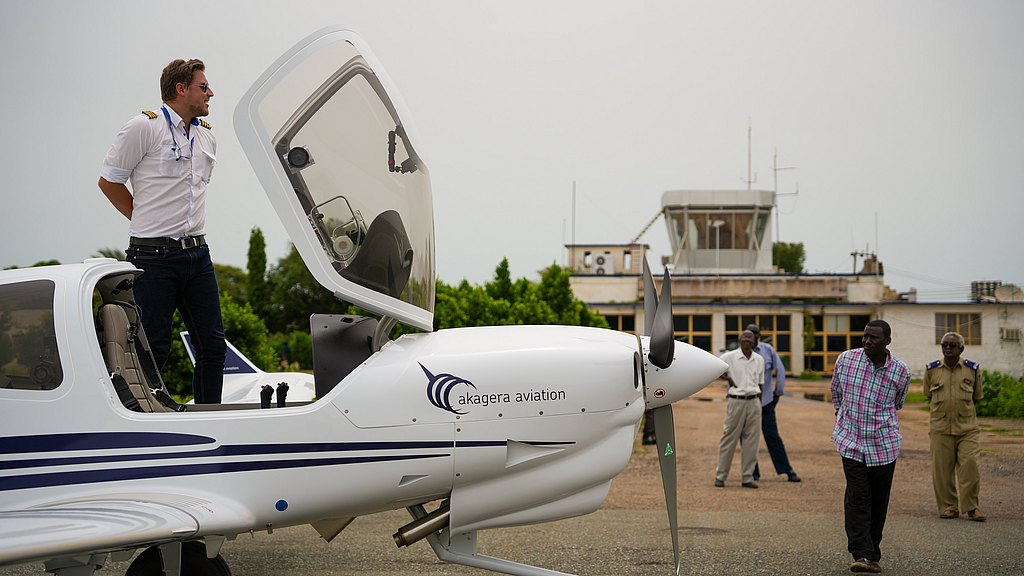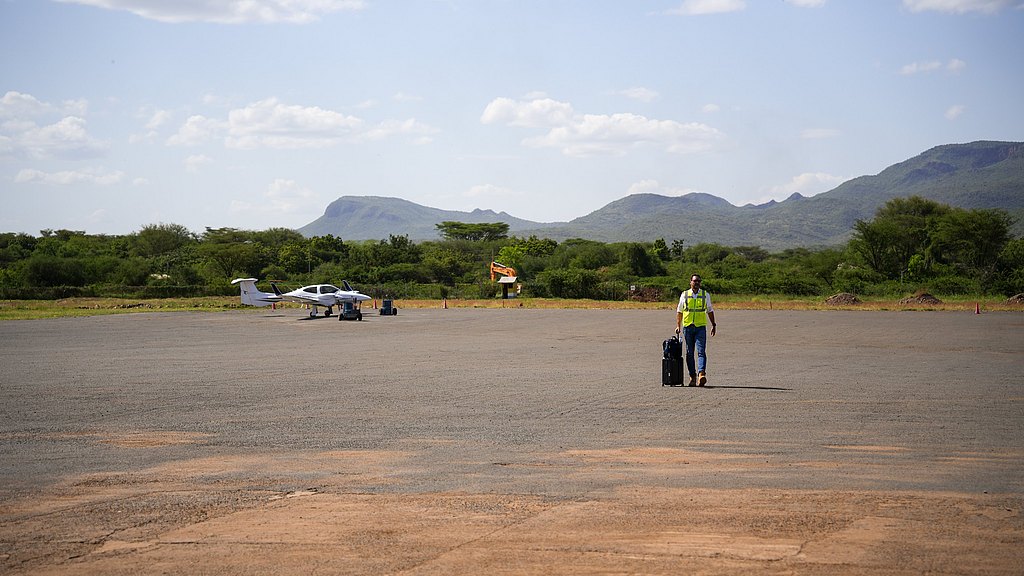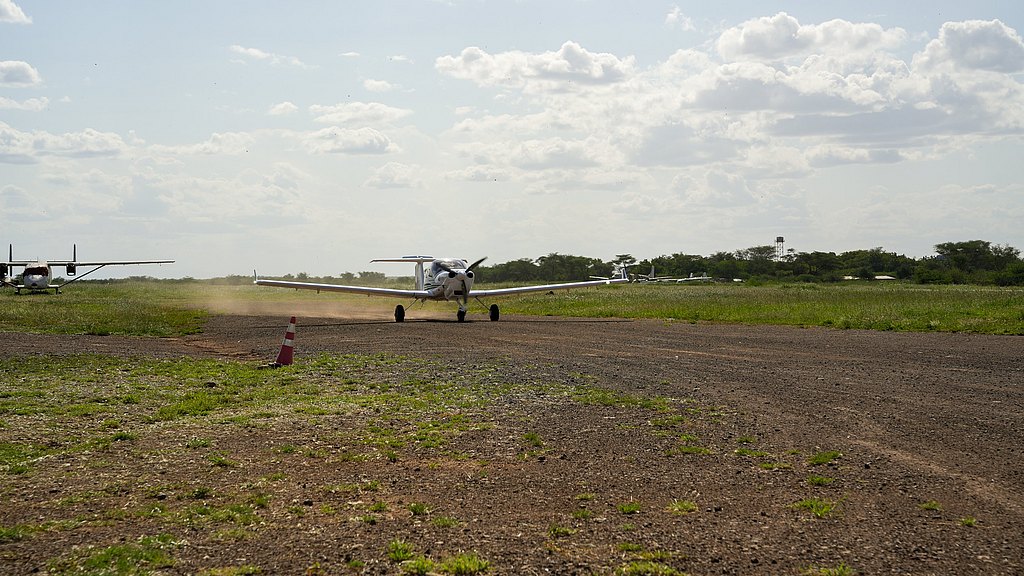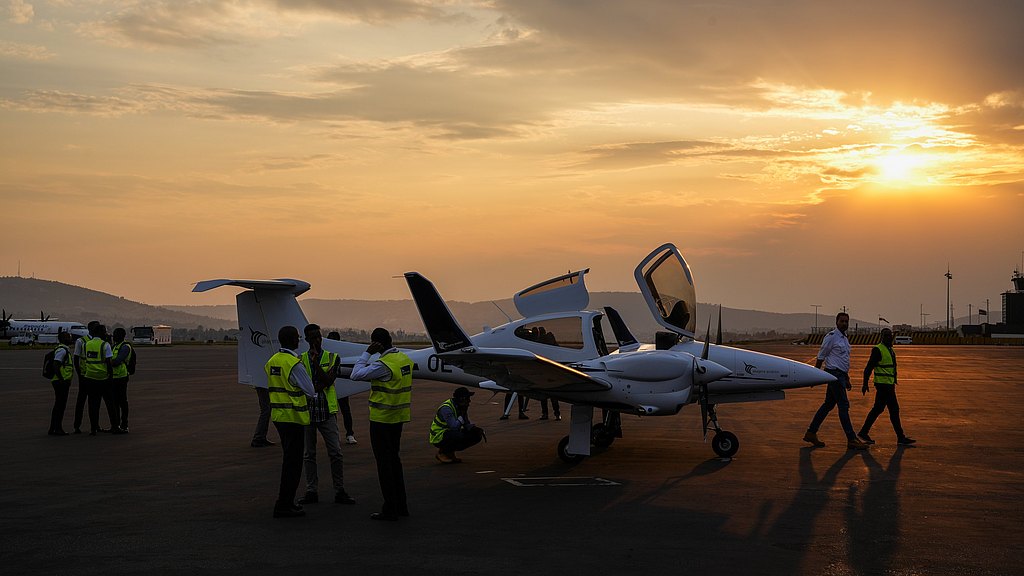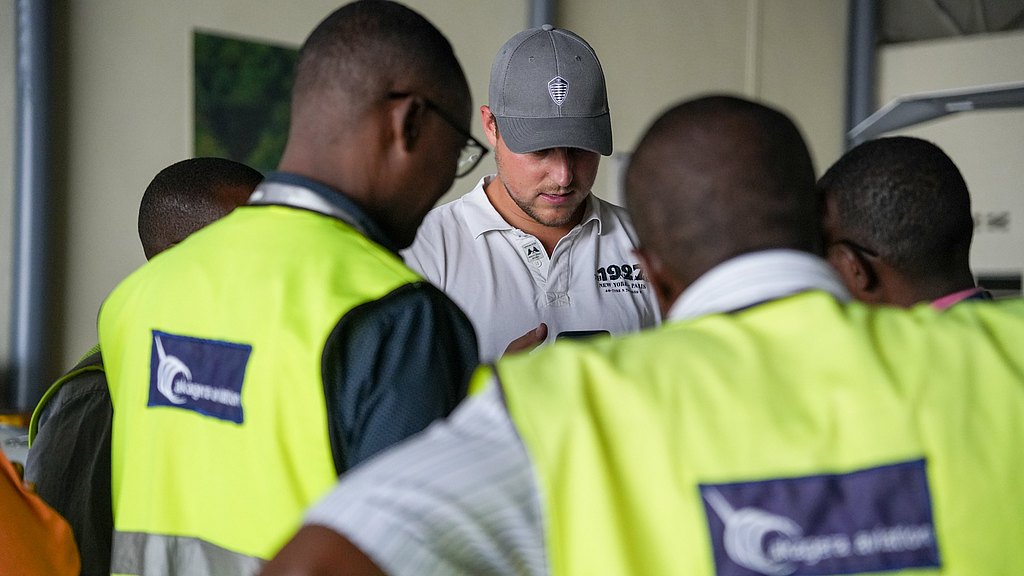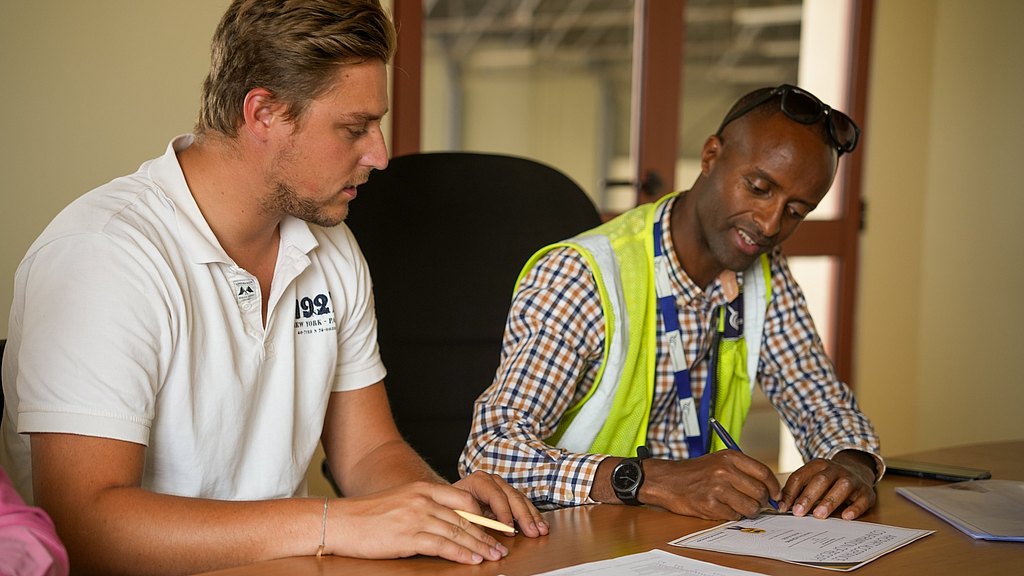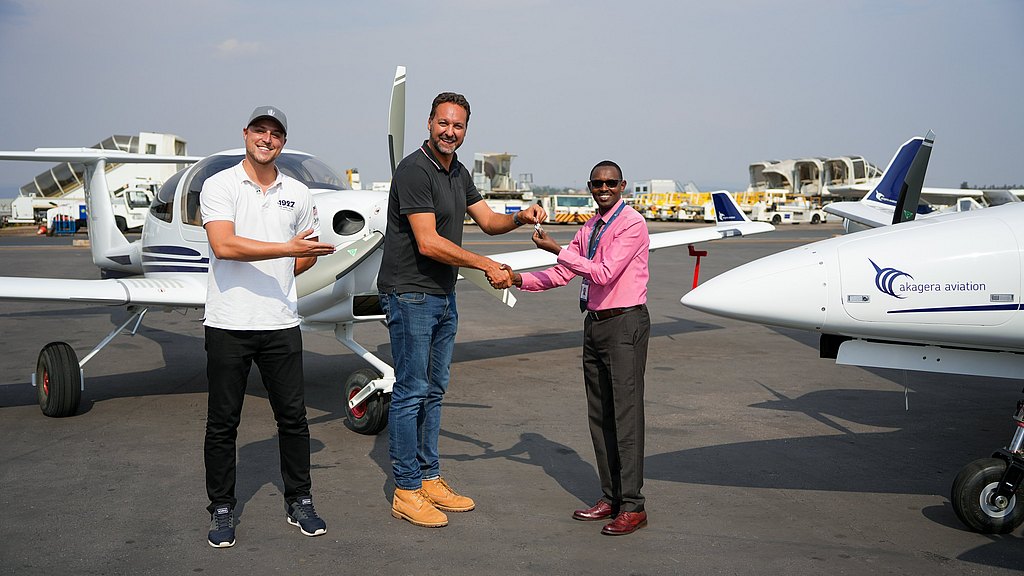Missed part one of “A ferry flight to Africa”? Click here.
Skyfaring
In his book “Skyfaring: A Journey with a Pilot” Mark Vanhoenacker, a former banker turned airline pilot, writes about “place lag” – a feeling caused by “the inability of our deep old sense of place to keep up with our airplanes.“
Seven years had passed since I first read the book without paying much further attention to the term. While I watched the students peel off their new planes’ temporary Austrian registration, I finally understood what Vanhoenacker had tried to convey. This must be it. Only two days earlier we had circled the Pyramids of Giza, a request granted by Cairo ATC, much to our disbelief. The night before that, we were still on European soil. And then there was a sleepless night in the sweltering heat of Aswan. By the end of that day, we had crossed into Sudan and then on to Lokichogio, Kenya. Days, moments, and places had melted into one.
In the span of the first few hours of those days gone by, the DA42-VI we were ferrying had become our travel companion in its own right. By day two we had turned its cockpit into our temporary home that would even fit Martin’s 6-foot-7 frame. And one, that would easily hide all the sandwiches, protein bars, candy bags its crew had brought along for the ride. By our smiles, you could tell we were just one floor away from heaven.
I had gotten used to a few other things too. The look we received when my towering co-pilot emerged from the cockpit. And the excited stares as the two brand-new aircraft landed in Khartoum, Ad-Damazin and Loki. In a part of the world where old oil burners still populate the skies, they looked like visitors from a different world. During refueling ops, Martin and I would take turns proudly answering all the questions – and many questions there were. How fast? How far? How much fuel?
Ah yes, fuel. When you fly across vast areas of nothing-but-a-far-way-home, you get obsessed with a few things. Fuel is on top of the list. Hours into our third flying day, and somewhere en route to Ad-Damazin, I nervously eyed the fuel gauges. For what seemed a small eternity, they had barely moved. Trust me, I was pretty close to giving the digital fuel gauge on the Garmin G1000 NXi’s multi-function display a solid old-fashioned knock. Not that it would have helped, but dire moments ask for imagination. Then it dawned upon me. Even with hundreds of hours on DA42s, I had forgotten a simple fact. We were cruising at only 60 percent power to keep the gap between us and Micke trailing in the Diamond DA40 Tundra as small as possible. I quietly chuckled as I realised just how little fuel we were burning – barely 10 gallons an hour on two engines. Behind us, Micke trailed in the DA40 Tundra – and its big wheels would soon come in very handy on the unpaved airstrips of Africa. After close to eight hours of flying, we finally entered Kenyan airspace.
Loki
For years, Loki had been the home base of the United Nation’s fleet of cargo planes. From the little strip in Kenya, thousands of tons of food had been flown into neighboring South Sudan. Which explained the short but well-maintained runway and the availability of an RNP approach. While Martin marveled at the giant homes mound-building termites had crafted in the landscape below us, I focused on hitting the threshold and rolling out without much braking action. In the heat of Central Africa and without spare tires available, it’s always good to show some extra love to your gear. Like every pilot I have had my good landing and teeth-rattling touchdowns. I managed a soft one, time to finally stretch our legs and get dinner.
When you travel a lot, the ability to make new friends can either save you or get you into trouble quickly. Over a beer at the “747 pilot camp” in Lokichogio (or simply “Loki”) Micke and I were quietly putting bets on the latter. Martin had discovered a giant spider and was determined to add it to his growing list of animal photos. Sitting in a corner and quietly minding its own business, it lent a new meaning to the old saying that “in Africa everything is just a little bigger”. Watching from afar, and after what we considered an epic stare-down, Martin got his picture. As he returned to our table with a triumphant smile, I let out a small sigh. Man vs. Beast 1:0.
Over the next two hours, our new 8-legged-friend turned out to be the least of our concerns. One leg of a little over three hours away from our destination, our last overflight permit had not yet been granted. Close to midnight, we decided to call it a day, shrugging it off under T.I.A. This is Africa. In the days before, I had quickly come to learn the core competence of ferry flying. While it’s generally great aviation practice to have a plan B readily available, ferry pilots add plans C, D, and E – and never put all their bets on one.
And so, on the next day and sitting on our bags back at Loki Airport, we waited. After six hours, someone, somewhere, had finally put the right stamp on a piece of paper. We finally took off as a giant chain of CB clouds appeared on our right. Behind them laid the promised land, or at least our destination of Rwanda. Somehow, we had to get through.
With a few touches, we flipped on the DA42’s capable weather radar. A minute later, Martin had quietly separated the ground echoes from the red cores of the towering clouds off our right wing. The Diamond’s weather radar is one of those things that you seldom ever need, until you really need it. Event today, I am sometimes still surprised how few pilots know how to properly use one of the most important tools their planes offer to them. Martin, on the other side, was a master of his craft. 30 minutes later, we popped out of a wall of clouds. Hidden under a thin overcast layer was the equator. We requested a descent through, and below us, Lake Victoria came into view. 30 minutes later and as we left the world’s largest tropical lake behind us, we got a first glimpse of the “Land of a Thousand lakes”, as Rwanda has been called for its topography. Only a day earlier, we had been cruising over the desert. Now lush green filled our window as we crossed over Akagera National Park, namesake for the flight school we would soon hand our trusted companion over to. As we touched down on Kigali’s runway 28 the sun was already low. Two minutes later, I brought the plane to a halt in front of Akagera’s hangar. Students had piled out of the building. 25 block hours after our departure and with the pressure of delivering the planes on time gone, I was ready to finally shake hands on our trip. “Not yet.” Smiling, I completed the shutdown checklist. Then we shook hands. Now we were done.
Epilogue
The next day, papers were signed, and keys handed over. Standing there and watching as the planes changed their owners, I couldn’t help but wonder who would fly them in the years to come. To us, they had been a temporary home as we cruised in the sky above Europe and Africa. To generations of students in Rwanda, they would soon become invaluable tools to learn their craft on their way to an airline cockpit. As we grabbed our bags and belongings to board a commercial flight back, I gave the two white planes now parked in Akagera’s hangar a long last look. Memories had been made. More memories were soon to be created by what we had left behind.
About the Author
When he’s not busy hosting podcasts or consulting through his content agency Mindwork, Stefan Jaeger, a native of Klagenfurt, Austria, spends his time in the cockpits of a DA42 and a PC12. You can find him here on LinkedIn, Instagram, Facebook and on YouTube.
Disclaimer: The views and opinions expressed in this article are those of the author(s) and do not necessarily reflect those of the Diamond Aircraft Group and its employees. The Diamond Aircraft Group is not responsible and does not verify for accuracy of any of the information contained in the article. A liability or guarantee for the topicality, correctness and/or completeness of the provided information and data is excluded. Diamond Aircraft Group is not liable for direct or indirect damages resulting from the use of the information or data found on this website/ blog. There are no rights and obligations between Diamond Aircraft Group on the one hand and the user of the website or third parties on the other hand. This declaration applies to all links on this website.
